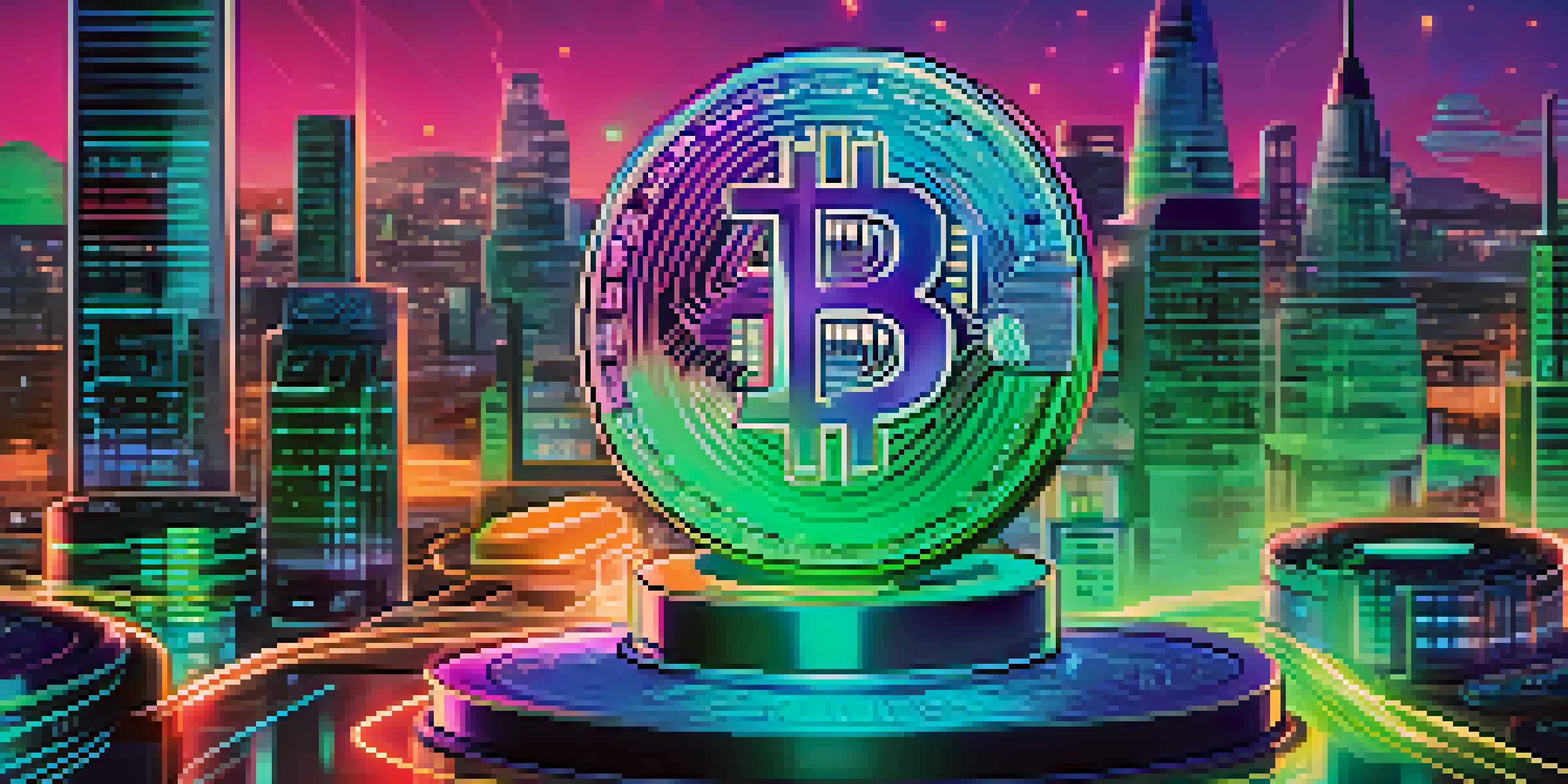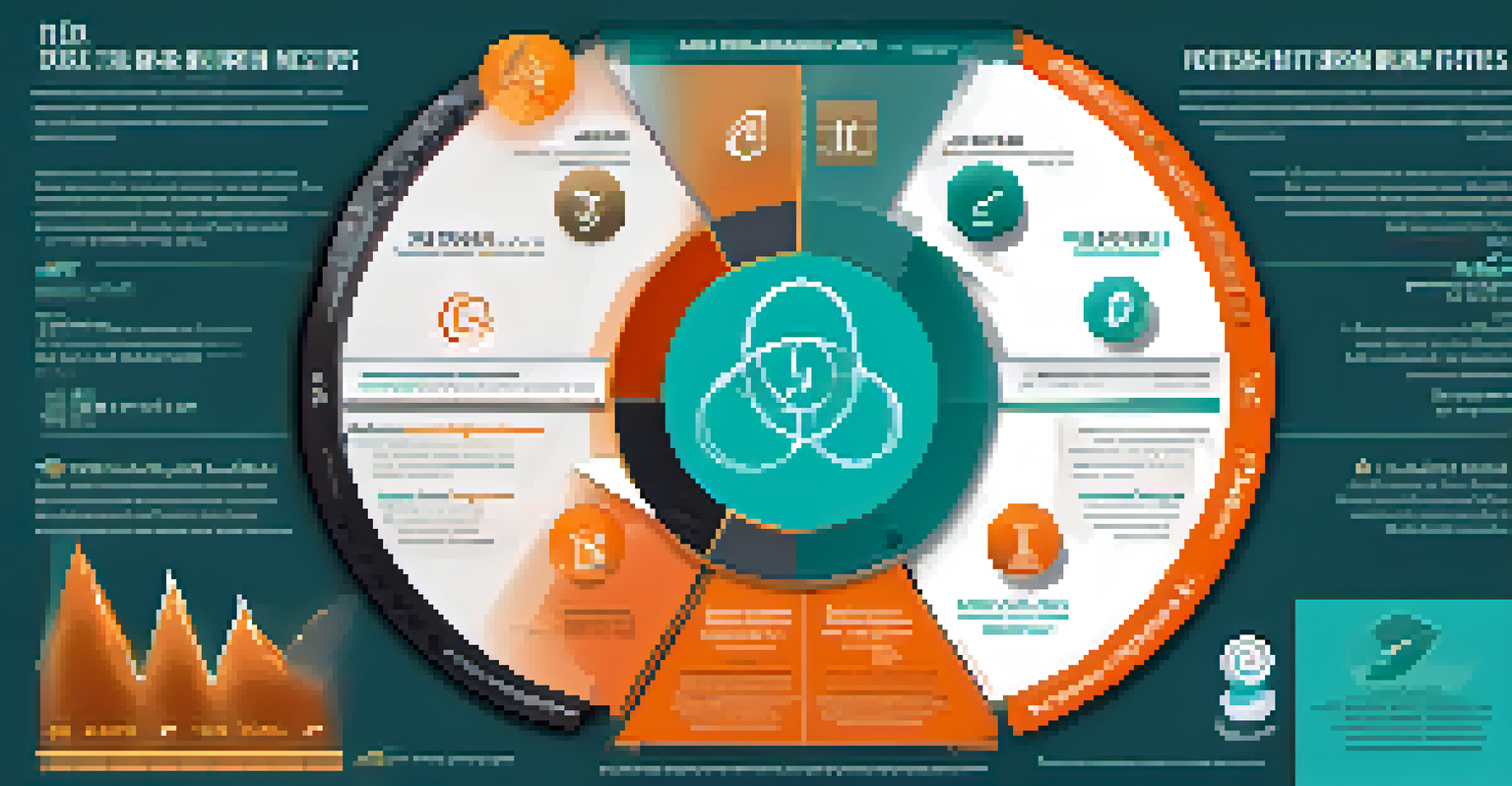Token Burn Mechanisms: Impacts on Value and Scarcity

Understanding Token Burn Mechanisms in Cryptocurrency
Token burn mechanisms involve the intentional reduction of a cryptocurrency's supply by sending tokens to a wallet that is inaccessible. This process is designed to increase scarcity, potentially leading to a rise in value over time. Essentially, when tokens are burned, they are permanently removed from circulation, which can create upward pressure on prices as demand remains the same or increases.
Token burning is a strategic tool that can enhance scarcity and potentially lead to price appreciation in the market.
Think of it like a limited-edition collectible; when fewer are available, the remaining items often become more desirable. Similarly, in the crypto world, when a project announces a burn, it can spark excitement among investors, leading to increased buying activity. This mechanism is one way projects can demonstrate commitment to their community and the long-term viability of their token.
However, it's important to note that not all burning strategies are created equal. The effectiveness of a burn can depend on various factors, including the overall market conditions and the token's utility within its ecosystem. Therefore, understanding the nuances of token burn mechanisms is crucial for investors looking to gauge their potential impact.
The Economic Impact of Token Burning on Value
When a significant amount of tokens are burned, the immediate effect is a reduction in supply, which can create a sense of scarcity. This scarcity can lead to higher demand, especially if the project has a strong community and use case. For example, Bitcoin's halving events, which reduce the rewards for mining new blocks, have historically led to price increases due to the decreased rate of new supply entering the market.

Moreover, token burns can serve as a signal to the market that a project is committed to maintaining or increasing value. This can enhance investor confidence and potentially attract new buyers. The psychological effect of seeing a project actively managing its supply can create a sense of security for investors, encouraging them to hold onto their tokens rather than sell.
Token Burns Increase Scarcity
Burning tokens reduces supply, creating scarcity that can potentially drive up demand and value.
However, while burning can increase value, it is not a guaranteed outcome. Investors should consider other fundamental factors that contribute to a token's value, such as its utility, technology, and market sentiment. A token burn is just one aspect of a broader strategy that can influence price dynamics.
Scarcity: A Key Driver Behind Token Value
Scarcity is a foundational principle in economics and plays a significant role in determining the value of a cryptocurrency. When tokens are burned, the available supply decreases, which can lead to increased perceived value among investors. This principle is akin to how a rare painting might command a higher price at auction compared to a mass-produced print; the rarity itself adds to its allure.
Scarcity plays a crucial role in the perceived value of a cryptocurrency, much like how rarity elevates the worth of a collectible.
In the crypto space, projects often leverage scarcity to create a sense of urgency among potential buyers. When investors know that a limited number of tokens exist, they may be more inclined to purchase before prices rise further. This can result in a cycle where the anticipation of scarcity drives demand, leading to higher prices and increased interest in the project.
However, scarcity must be balanced with utility. A token that is scarce but lacks real-world application may struggle to maintain its value over time. Therefore, projects must ensure that their tokenomics—how they manage token supply and demand—align with their long-term goals and community needs to truly benefit from scarcity.
Different Types of Token Burn Methods Explained
There are several methods by which tokens can be burned, each with its own implications for value and scarcity. The most common method is the periodic burn, where a project commits to burning a certain amount of tokens at regular intervals. This method can create predictability and help investors understand how supply will change over time.
Another method is the buy-back-and-burn, where the project team uses profits or funds to buy back tokens from the market and then burn them. This approach can be particularly effective as it demonstrates the project's commitment to enhancing value for existing holders. Additionally, some projects implement burn events tied to specific milestones or achievements, adding an element of excitement and community engagement.
Different Burn Methods Available
Various token burn methods, such as periodic burns and buy-back-and-burn, each have unique implications for value and community engagement.
Each of these methods has its strengths and weaknesses, and their effectiveness can vary based on market conditions and investor sentiment. Understanding these different approaches can help investors make informed decisions about which projects to support and how they might benefit from token burns.
Real-World Examples of Successful Token Burns
Several high-profile projects have successfully implemented token burn mechanisms, leading to notable impacts on value. For instance, Binance Coin (BNB) has a quarterly token burn schedule where a portion of the tokens is permanently destroyed based on trading volume. This has significantly contributed to BNB's price growth and solidified its position in the market.
Similarly, Ethereum's EIP-1559 introduced a burn mechanism that aims to reduce the supply of ETH over time by burning a portion of transaction fees. This has added a layer of scarcity to Ethereum, which many investors believe enhances its long-term value. These examples illustrate how a well-structured burn mechanism can positively influence a token's market perception.
On the flip side, not all burn initiatives have led to lasting price growth. It's crucial for projects to communicate their burn strategies clearly and ensure they align with the overall vision of the project. Transparency and community involvement can play a pivotal role in the success of these initiatives.
Potential Risks Associated with Token Burning
While token burning can create scarcity and potentially boost value, it also comes with risks that investors should be aware of. One significant risk is that a burn might not lead to the expected increase in price, especially if market conditions are unfavorable. If investors are solely relying on a burn to drive value, they may be disappointed if demand does not keep pace with supply changes.
Moreover, excessive or poorly communicated burns can lead to confusion within the community. If investors are unsure about the implications of a burn or if they feel the strategy lacks transparency, it can result in skepticism or even panic selling. This underscores the importance of clear communication from project teams regarding their burn strategies and the rationale behind them.
Risks of Token Burning
While token burns can boost value, they also carry risks, including potential price stagnation and community confusion if not communicated effectively.
Lastly, some projects may use burns as a gimmick to attract attention without a solid underlying value proposition. Investors should be cautious and conduct thorough research to ensure that a project’s burn mechanism aligns with its overall business model and long-term vision.
Future Trends in Token Burn Mechanisms
As the cryptocurrency landscape continues to evolve, token burn mechanisms are likely to become more sophisticated and diverse. Innovations in this area could include automated burn protocols that adjust based on market conditions, ensuring that supply is managed dynamically. Such developments could provide a more flexible approach to maintaining value and scarcity, addressing some of the limitations of current methods.
Additionally, we may see more projects adopting a combination of burn strategies to maximize impact. For instance, utilizing both periodic burns and buy-back-and-burn methods could create a more robust framework for managing supply. This could enhance investor confidence and further encourage long-term holding, which is beneficial for project stability.

Ultimately, the future of token burns will depend on the broader market dynamics and the evolving needs of the crypto community. As investors become more educated about these mechanisms, they will likely demand greater transparency and effectiveness in how projects manage their token supply.